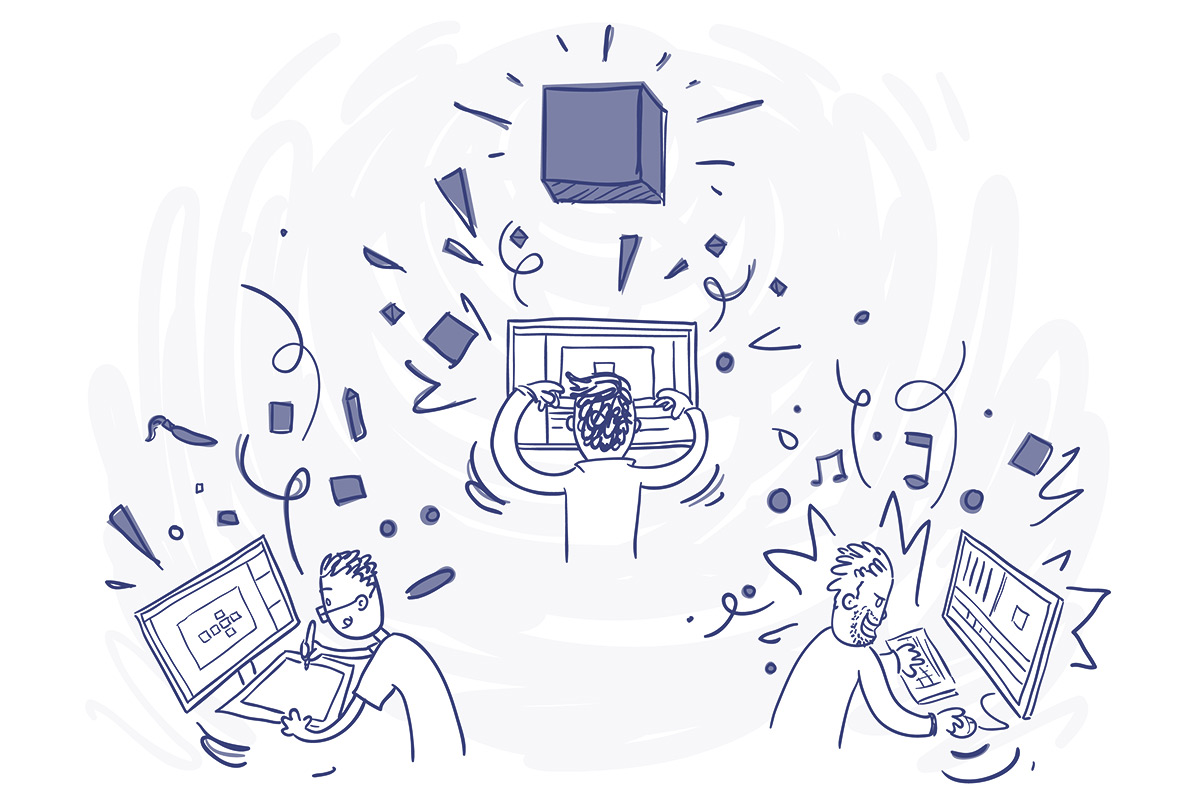
23 October 2020
Our Production Process
How does the production of an animation work at Unter freiem Himmel? A few years ago we created a booklet that shows our production process in a comprehensible way (and can be downloaded here). Today I would like to illustrate these steps with a concrete project, our latest animation for the Biobank of the Medical University in Graz.
Overview
Our animation production basically follows this process, which I will explain below in chronological order (without the feedback loops on the customer side):
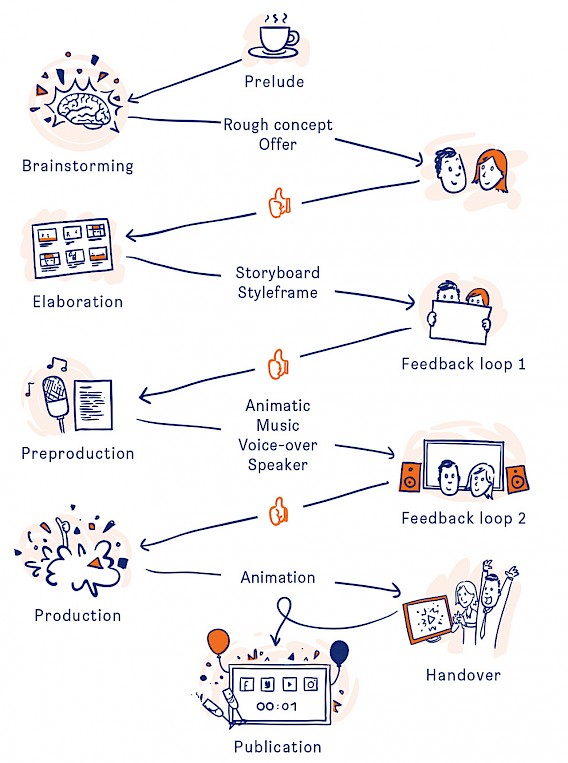
1. Prelude
It all began with a phone call from the Medical University of Graz, expressing interest in an animation and arranging a date for a meeting. The initial interview took place in person at the Medical University. First ideas and goals were defined in a relaxed atmosphere:
- What are the main messages of the animation?
- How is it used, to whom is it directed?
- Is there a budget frame?
- Which technical implementation (format, resolution, codec, etc.) is best suited for the application?
First ideas were exchanged and two versions of the animation were defined, which differ in their target groups: One version is aimed at patients and the public, the other at the staff of the biobank and MedUni.
The discussed contents were finally recorded in writing and sent to the customer for confirmation. Thus we had enough information for a ...
2. Offer & Concept
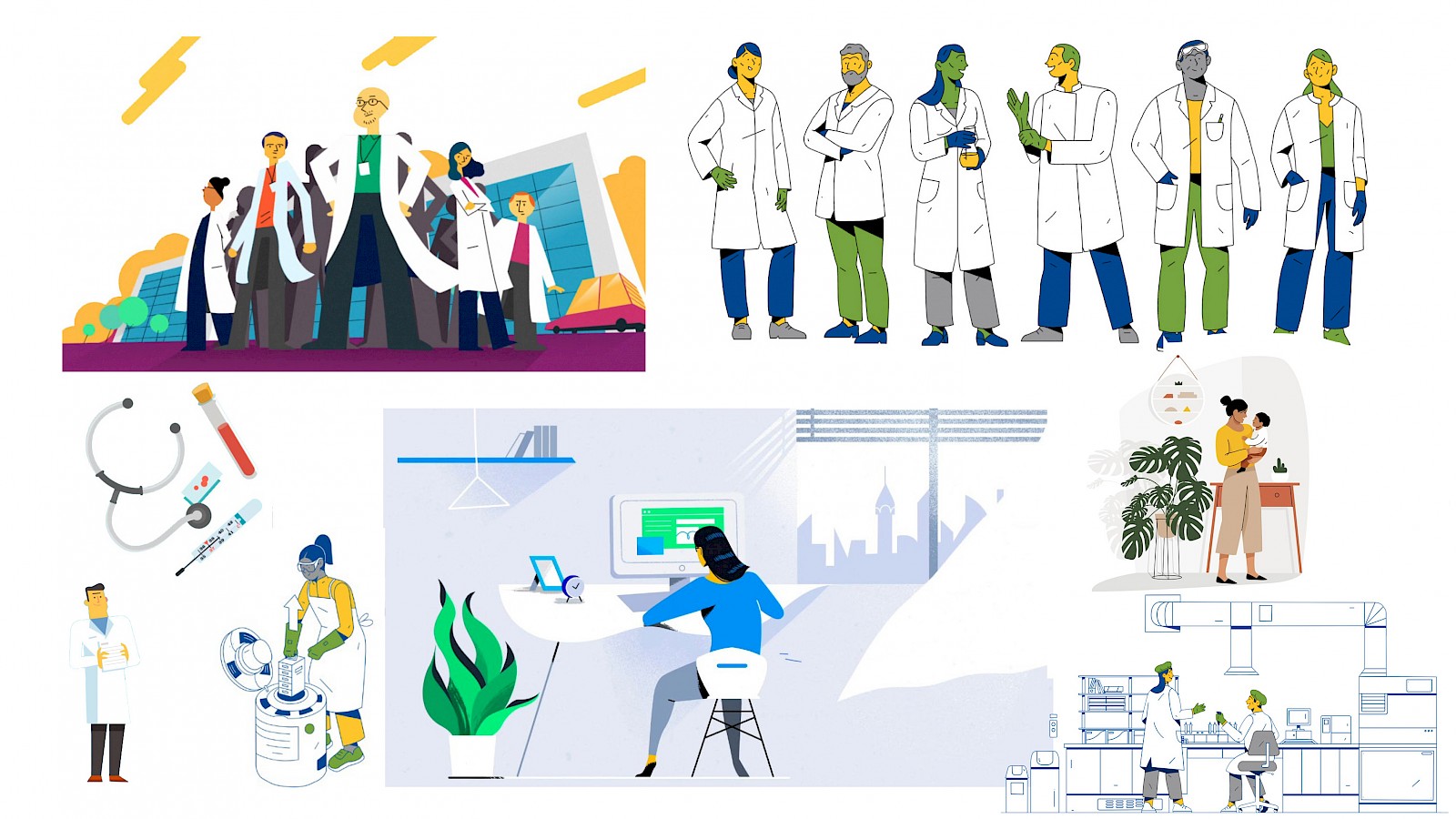
Fig. 1: Moodboard
From the results of our research and brainstorming sessions, a first concept was developed, which described the planned content and the approximate sequence of the animation. Accompanying this, we started to develop the graphic style. For this purpose, we defined the visual direction in which the film will go with a mood board.
Together with an offer, the concept including the moodboard was sent to Meduni and confirmed in writing shortly afterwards. That was the official start of the project.
3. Storyboard & Styleframe
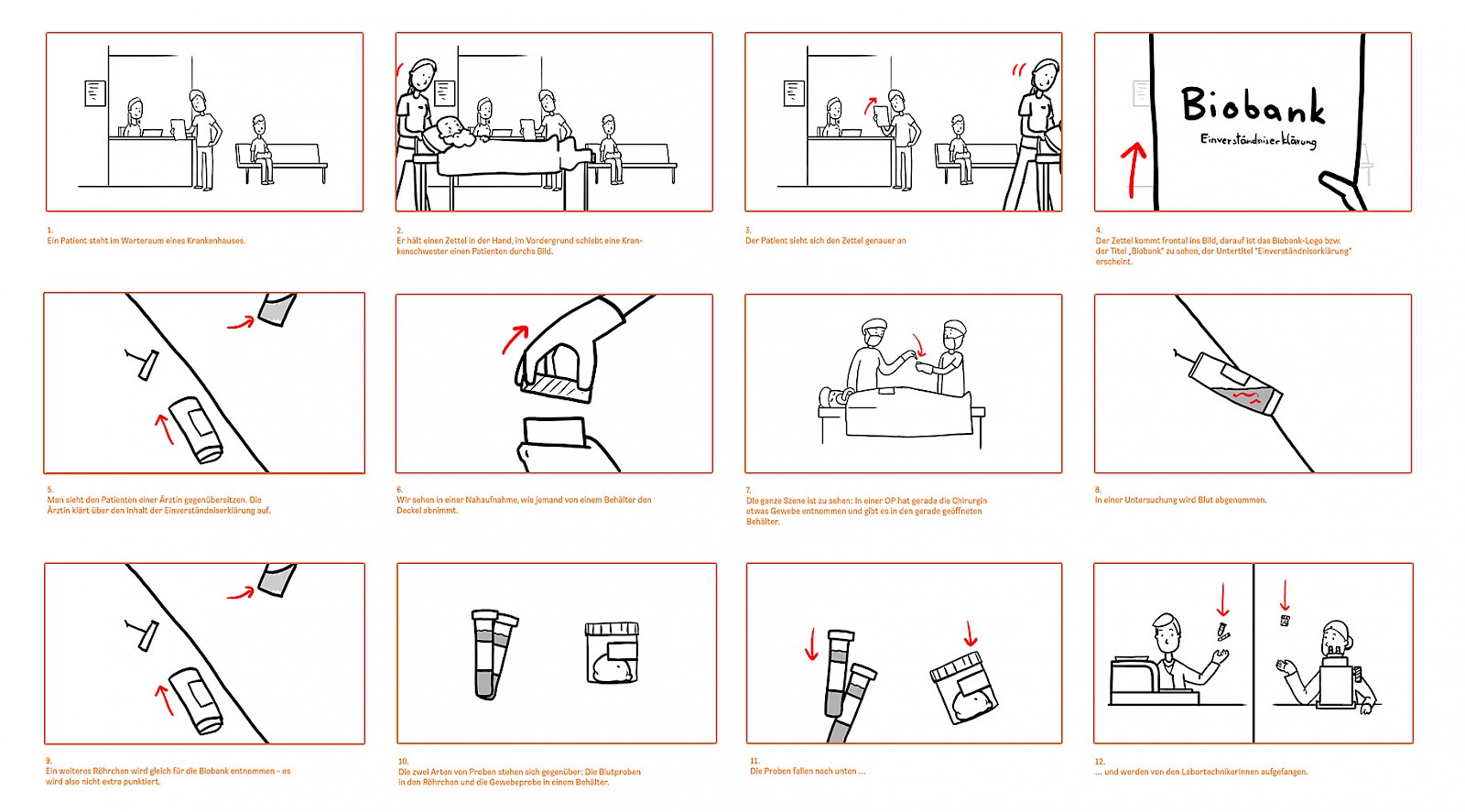
Abb. 2: Storyboard
After some fine tuning and further research (so we were allowed to visit exciting areas like the medical laboratory, pathology and the biobank itself), the probably most important phase in the pre-production started: The creation of the storyboard. This lays the foundation for the finished film and describes in sketched pictures the course of events and the plot. In this phase we tried to fix the content as well as possible to avoid changes in the production phase. The first version of the voice-over script was also created in this step.
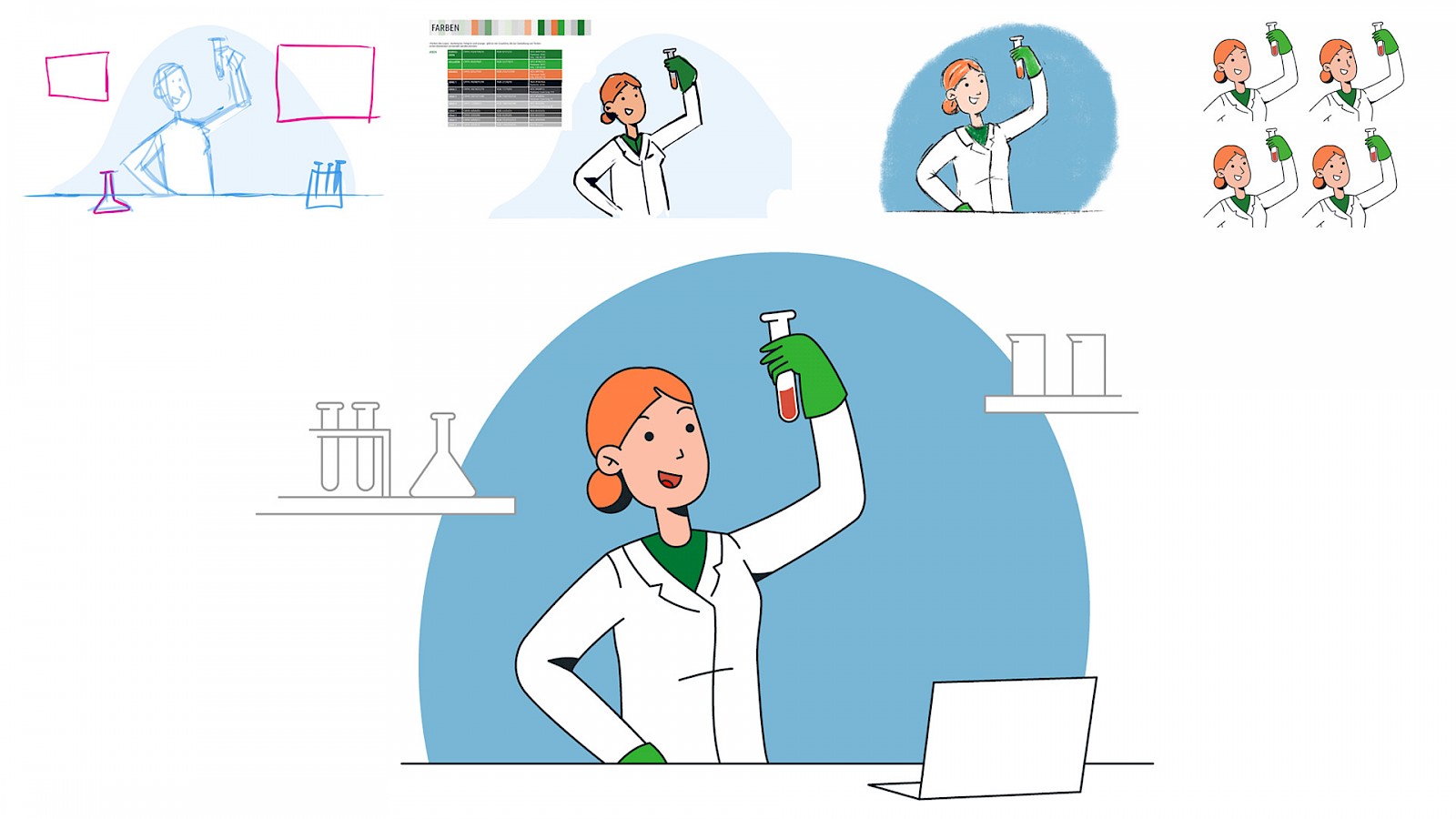
Abb. 3: Styleframe
Meanwhile, a style frame was produced. In a representative shot the graphic style was finished and thus determined the final style of the animation. The style frame thus fixed the color palette to be used, the lines, the backgrounds, the type of fills, etc.
4. Animatic
The umbrella term "animatic" essentially summarizes the final steps in pre-production: We searched for the appropriate music and selected several suitable speakers. The first version of the offtext was provisionally recorded by Ben to fix the timing of the animation. The result: The Animatic. A film, which lined up the images from the storyboard, with Ben's text and the proposed music. This animatic already conveyed very well the flow, timing and tempo of the final film.
5. Animation
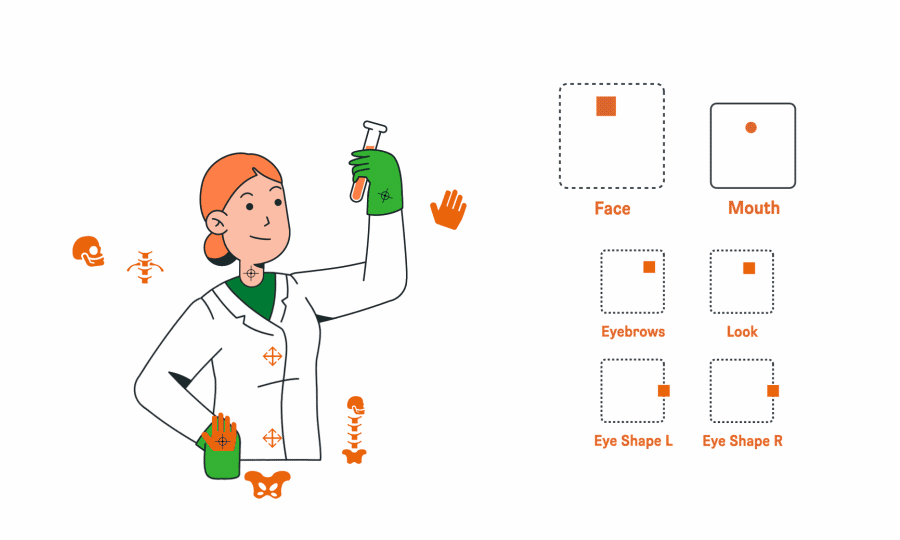
With the approval of the animatic we started with the last act of the production. All sketches were illustrated and prepared for the animation. We booked the speaker of our choice and finalized the music. The characters and backgrounds were rigged and animated - the pictures came to life!
Finally, all elements were put together, sound effects were added, color corrected and mixed and rendered for delivery to the client.
6. Veröffentlichung
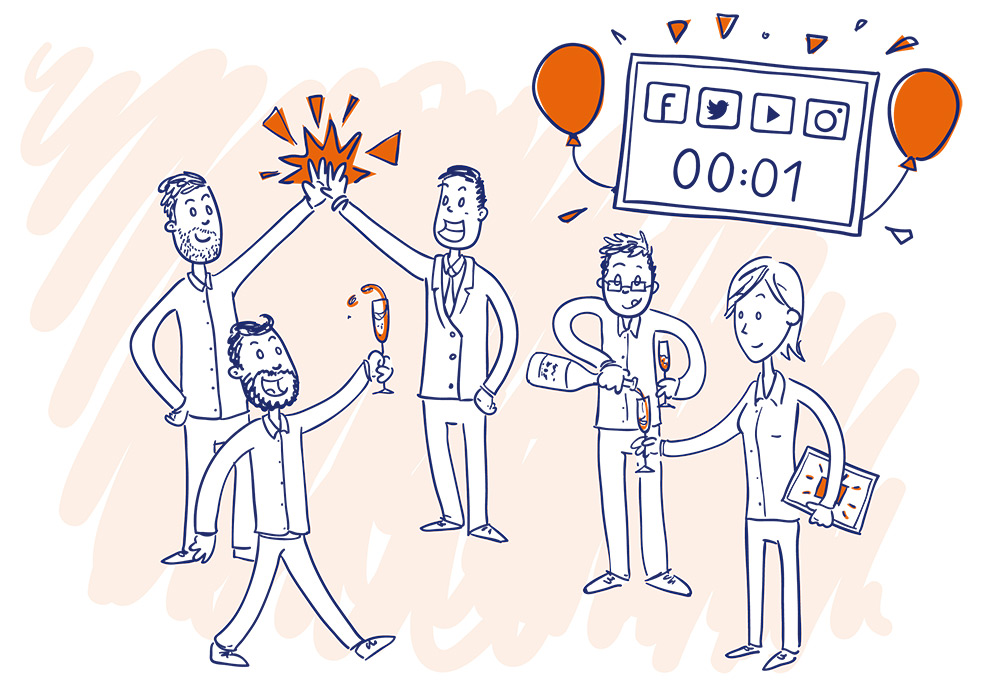
We absolutely wanted to coordinate the publication of the animation with the client. This year's "Lange Nacht der Forschung (Long Night of Research)" was an ideal opportunity to do so. During this event, the final version of the animation celebrated its premiere. In addition, we had already prepared some excerpts for use in social media, which we then posted on various days. This resulted in more coverage and attention around the animation.
We are currently implementing an English language version - a project, which we really loved, continues!
And here, once again, our animation about the biobanking process:
(Gernot Stefl)






